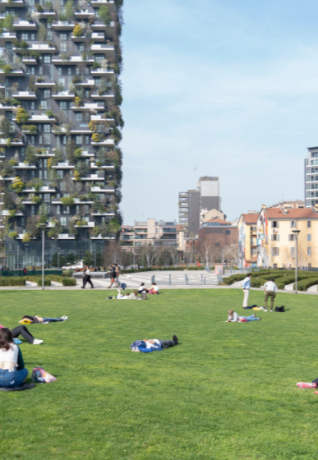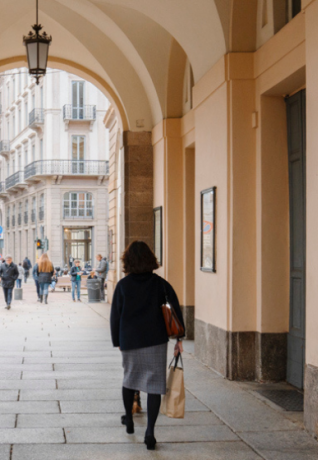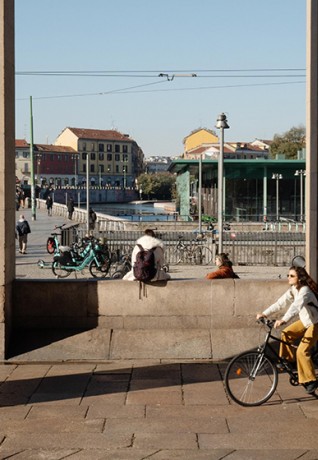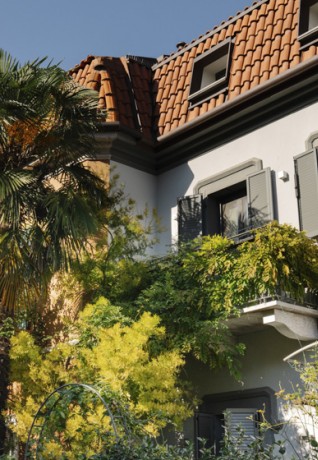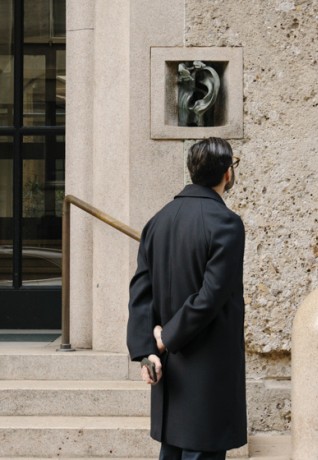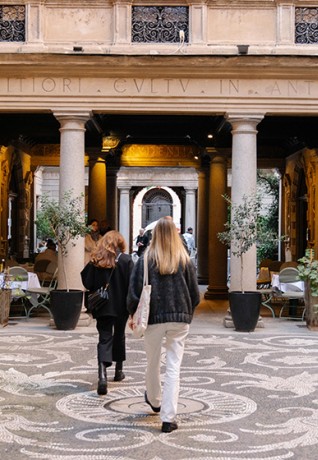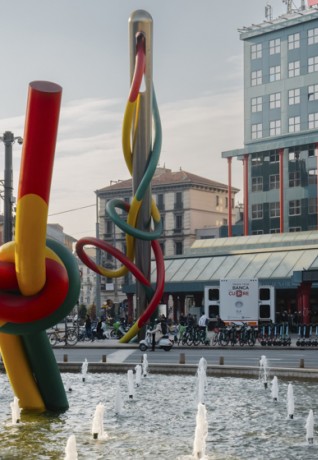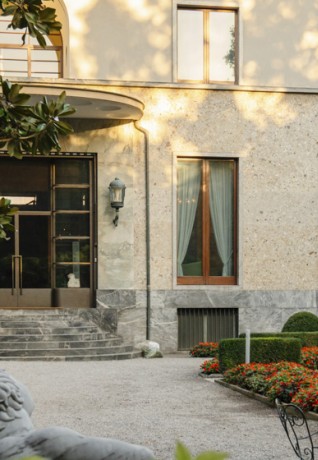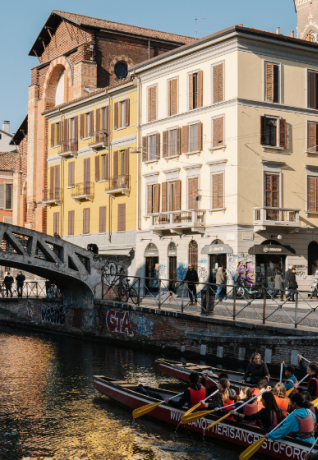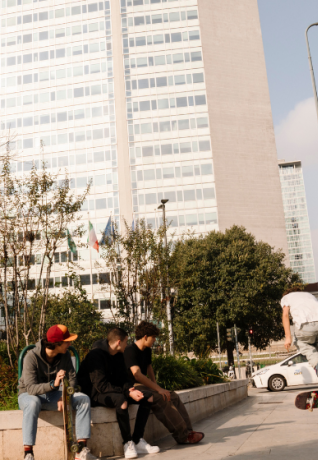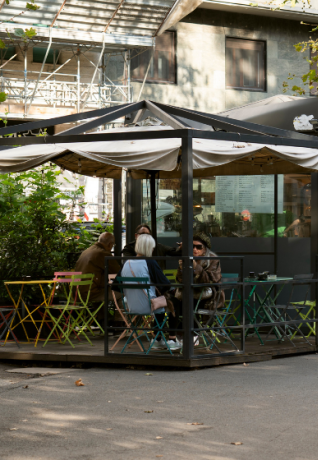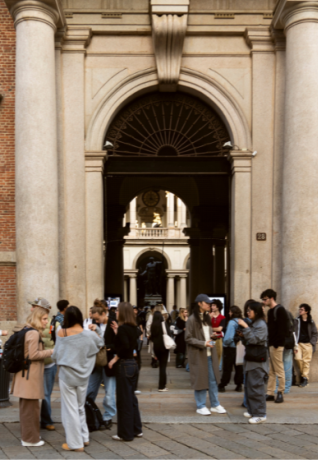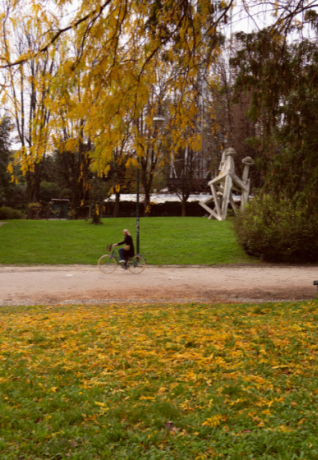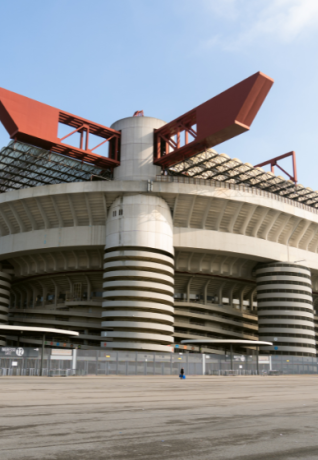Cultures and identities
Milano embraces diversity
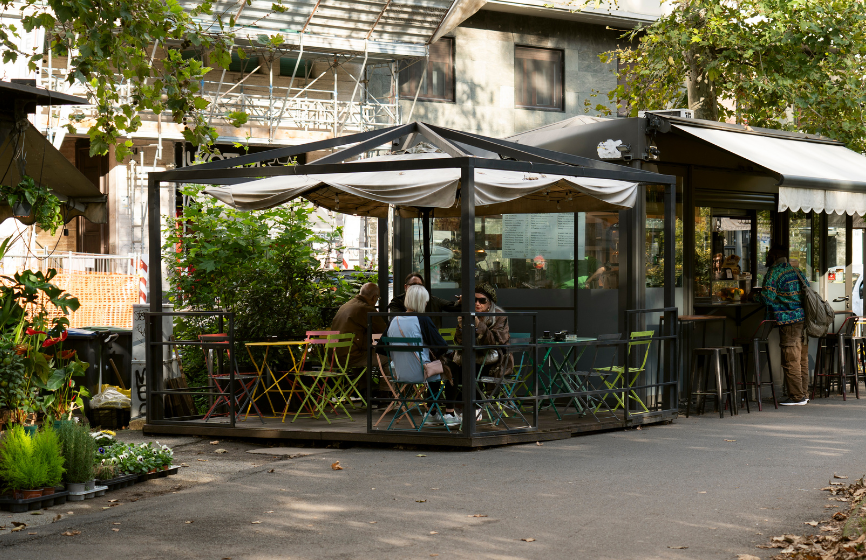
- NoLo Quarter: a symbol of urban regeneration
- Piazzale Susa: an evolving neighborhood
- Corso Venezia and Porta Venezia: Milano’s rainbow heart
- University of Milano: a centre of culture and activism
- Triennale di Milano: contemporary art and design
- Arco della Pace: a place to meet, and a Pride location
- -
Thanks to the neighborhoods of Milano that you’ll find in the coming-of-age novel “Corpi Minori” by Jonathan Bazzi, a Milano-based author from the LGBTQIA+ community, you’ll see Milano through his eyes - a city that celebrates and embraces diversity in all its forms.
Another area waiting to be explored is “North of Loreto”, better known as NoLo, a vibrant, up-and-coming neighborhood.
NoLo is famous for its creative and inclusive community, with a notable LGBTQIA+ presence. The area is a symbol of urban regeneration, where different cultures and identities live side by side in harmony. Some of its major happenings include festivals, exhibitions and evening events celebrating the full spectrum of diversity.
How to get there:
Metro: Pasteur
Overground public transport: 1, 55, 56, 90, 91
Another essential stop is Piazzale Susa, located in the Città Studi district.
This area - once, an important rail junction - is now known for its open and welcoming atmosphere.
Full of splendid Modernist palazzos like the ones at numbers 11, 13, 15 and number 1 in Viale Argonne, recently renovated with green areas, playgrounds and public benches, it’s an interesting place where historic and modern Milano meet, with a buzzing local scene.
How to get there:
Metro: Susa
Overground public transport: 38, 54, 62, 90, 91
Corso Venezia is one of the areas mentioned by Bazzi, and is famous for its historic palazzos and designer boutiques.
This boulevard leads to Porta Venezia, the beating heart of Milano’s LGBTQIA+ community. There are bars, shops and meeting places here, such as the Libreria Antigone bookshop, an essential stop for queer literature and culture. Porta Venezia also hosts numerous events during Pride Month, making it an essential calling point.
How to get there:
Metro: Palestro, Porta Venezia
Overground public transport: 9,33,61, 85, 94
Of course we couldn’t not mention the University of Milano. This centre of academic excellence is also a bastion of social activism. With over 100 years of history behind it, the university has seen many different civil rights movements active there, making it a very significant place for the LGBTQIA+ community.
How to get there:
Metro: Missori
Overground public transport: 12, 19, 24, 27, 60, 61, 84, 85, 94
Located in the Sempione Park, the Triennale di Milano is a space devoted to contemporary art, design, architecture and visual culture. Founded in 1923, it hosts international exhibitions, events and meetings that explore the realm of creative innovation. It’s an iconic location for anyone looking for new forms of expression and a point of reference for artists, designers and enthusiasts from around the world.
How to get there:
Metro: Cadorna, Cairoli
Overground public transport: 1, 10, 19
The 19th-century Arco della Pace (in Piazza Sempione) is not only one of the city’s most famous neo-classical monuments, it’s also, in particular, a place for people to meet, as evidenced by its historic and modern locations (from shopping to the quintessentially Milanese experience of aperitifs).
The area has also recently become a must for the LGBTQIA+ community, given that the closing Pride party is held there. A place of peace, a welcoming place for all.
Somewhere similar? Paolo Sarpi, with its lively mix of nightlife and different cultures - to end the itinerary on a note of beauty and diversity.
How to get there:
Metro: Cairoli
Overground public transport: 1, 10, 19, 85
Initiative created thanks to the resources of the Development and Cohesion Plan of the Italian Ministry of Tourism "Piano di Sviluppo e Coesione del Ministero del Turismo"

 Log in
Log in


